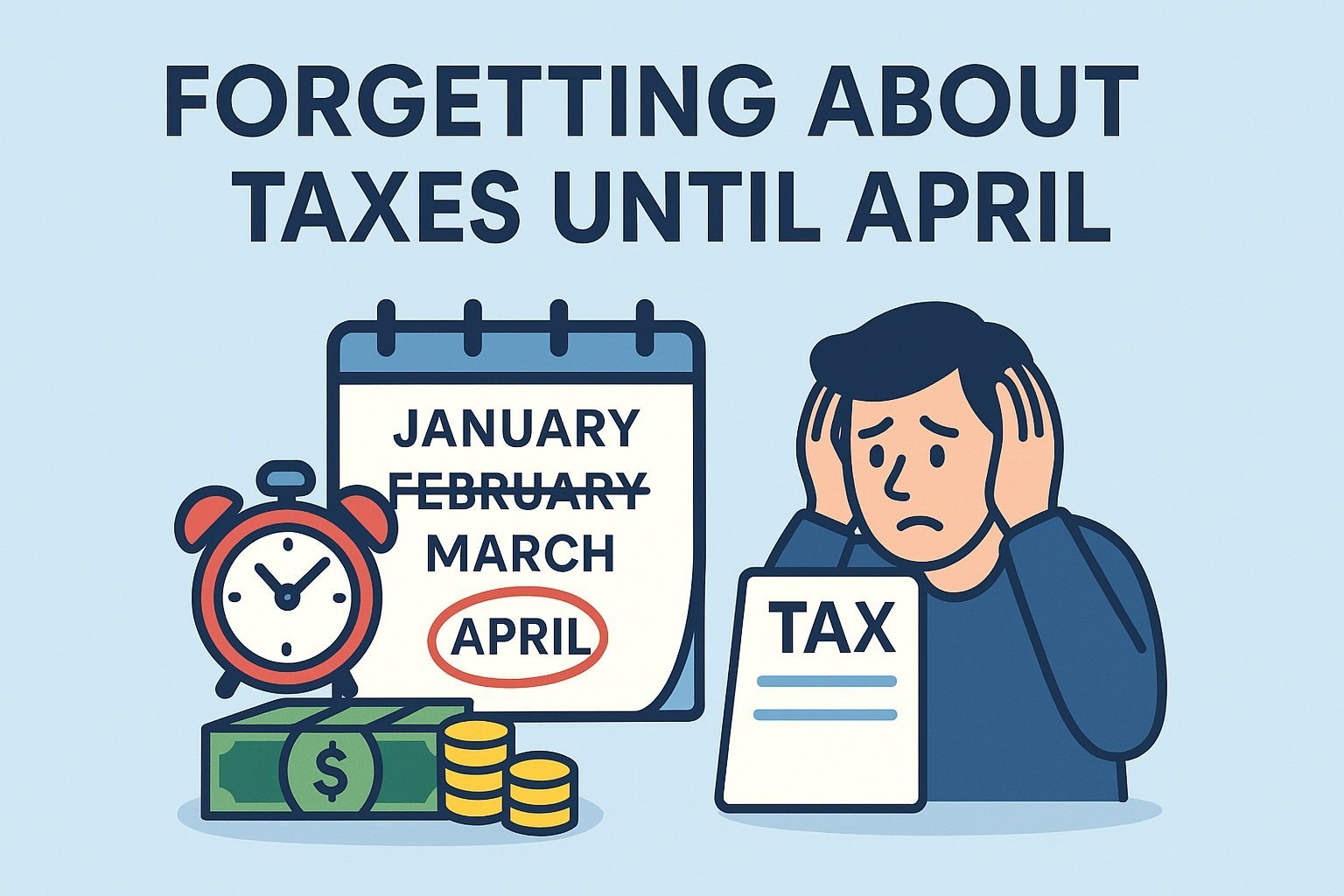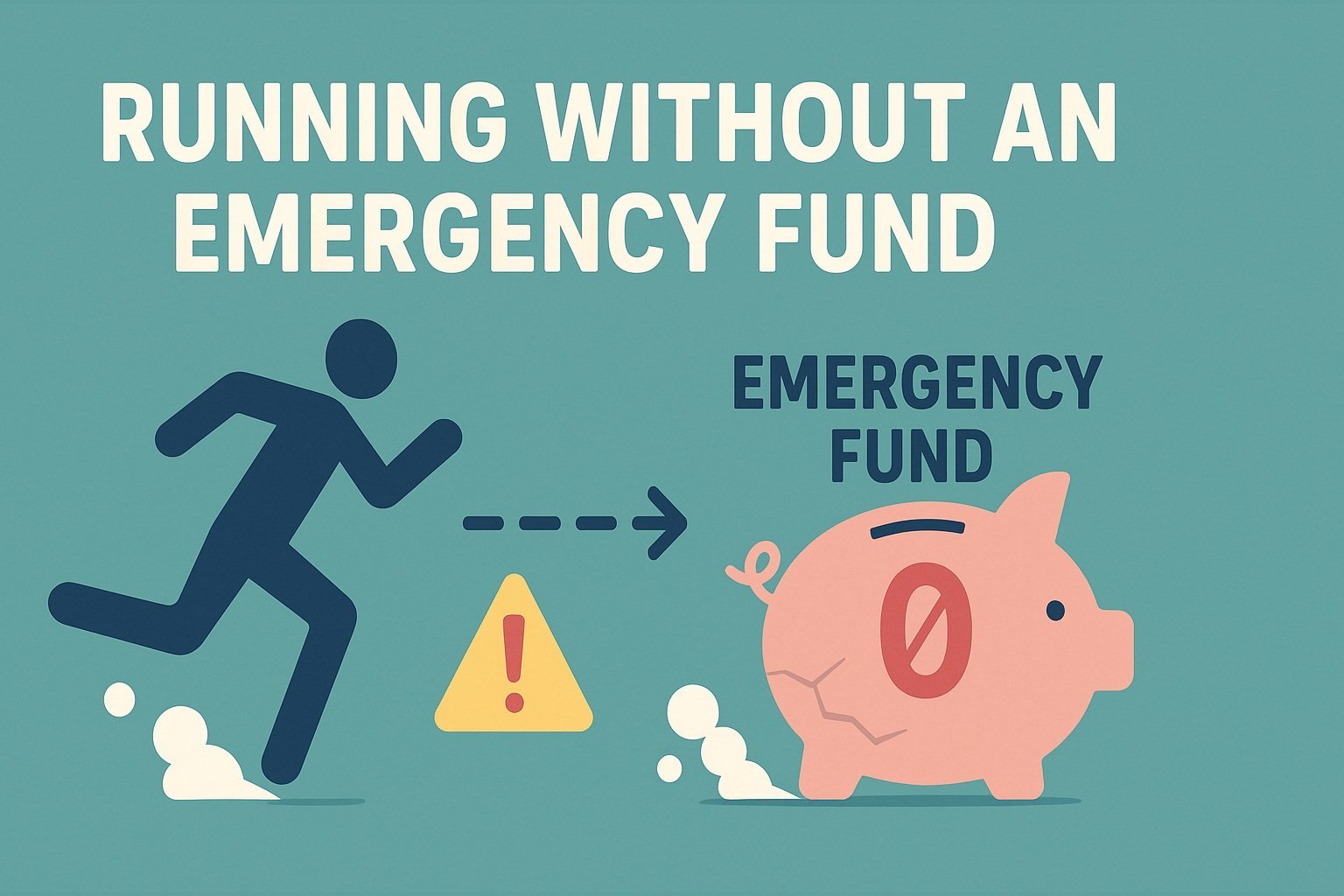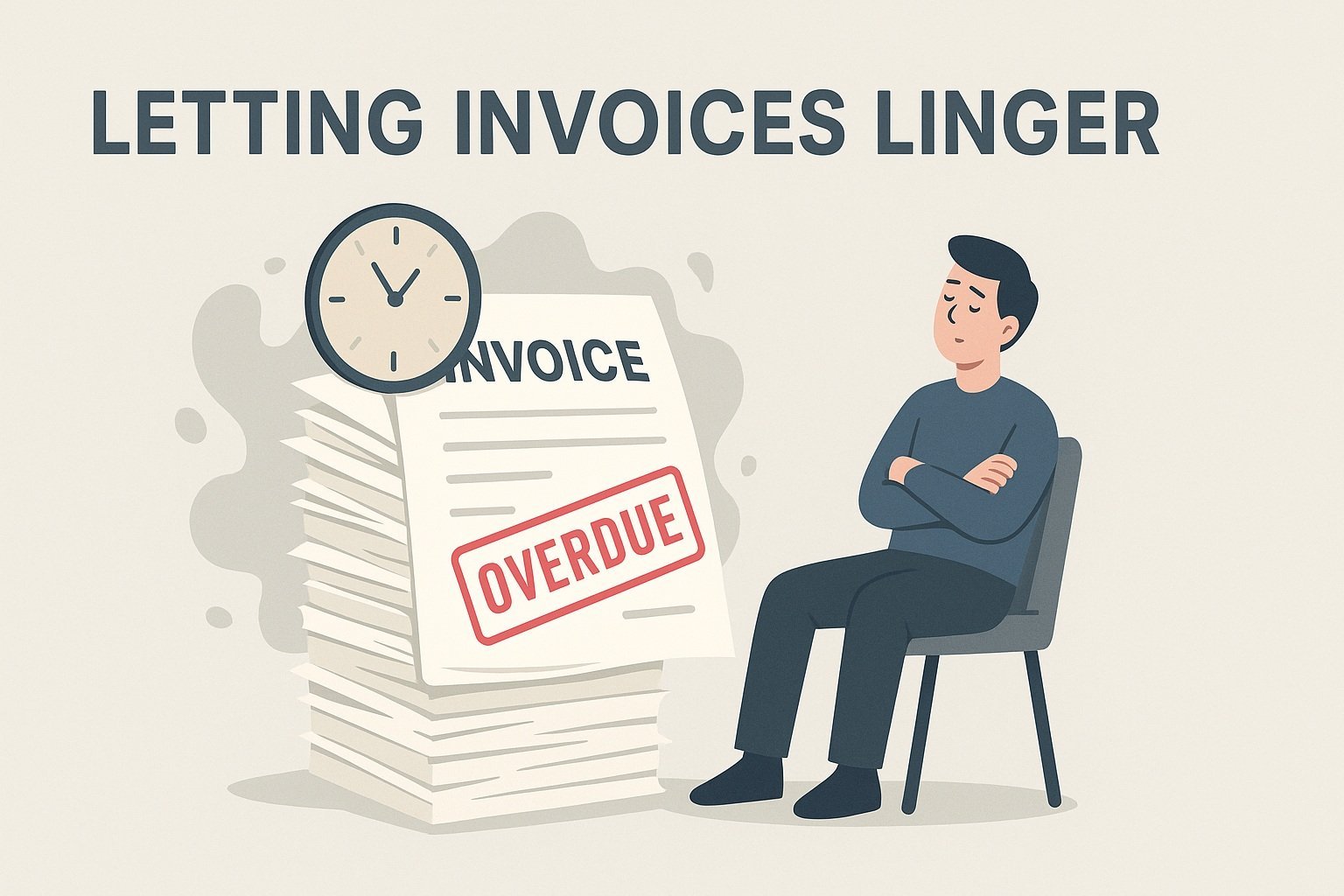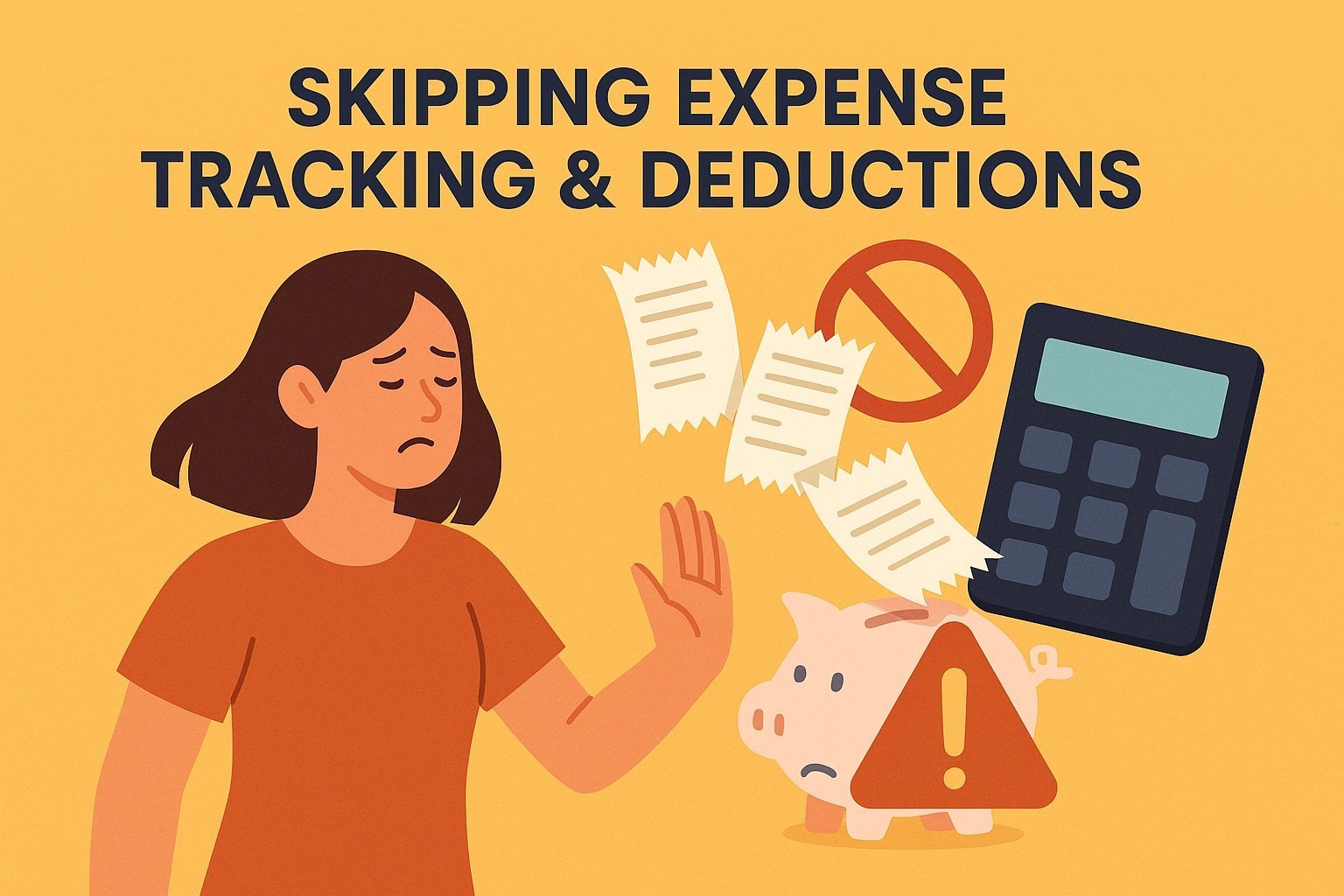
Money Mistakes to Avoid If You’re Freelancing Full-Time – discover 9 costly errors most freelancers make and the step-by-step fixes that protect your income, taxes and future security.
Freelancing full-time means you’re both the CEO and the payroll department. “Money mistakes” in this context are choices that quietly drain profit, trigger tax penalties or stall long-term wealth. In the next few minutes you’ll learn the nine errors that trip up even experienced independents and the exact playbook to avoid or correct each one, so you can keep more of every invoice and build a business that lasts.
Why Does Cash Flow Feel Harder for Freelancers Than Employees?
When you clock in for a salaried post, each pay period lands like clockwork. As a freelancer, though, you juggle “lumpy income” – some months the cheques roll in fast, other months crickets. At the same time you face both fixed costs (software subscriptions, rent or mortgage) and variable costs (healthcare premiums, one-off equipment upgrades). Without a steady drip of cash, it’s easy to scramble when an unexpected expense pops up or a client pays late. That’s why proactive systems are your best friend: they turn uncertainty into predictable, manageable steps.

Step 1: Diagnose your volatility (look at the last 12 months of revenue)
Pull up every invoice and bank deposit from the past year. Line them up month by month and calculate your gross income per period. Spot your highest-earning month and your lowest. Then compute the average of those 12 figures – that’s your baseline. Seeing these peaks and valleys in cold, hard numbers gives you a reality check: instead of guessing your cash-flow risk, you’ll know exactly how far your lowest income month dips below your average.
Step 2: Create a “buffer” account holding 1–2 months of average expenses
Now that you know your average monthly burn, open a separate bank account labelled “Buffer” or “Rainy-Day”. Transfer one-half of your average expenses into that account every payday until you’ve saved at least one full month’s worth – then aim for two. Treat this fund like a non-negotiable expense line item: just as you’d budget for software or taxes, schedule an automatic transfer into Buffer. When revenue dips or a big bill arrives, tap into this safety net rather than raiding your operating account or relying on credit. Over time, this simple habit smooths out the bumps of lumpy income and keeps you running like a well-oiled machine.
1. Mixing Business and Personal Money
When you dip into the same bank account for both your coffee run and client invoices, you’re setting yourself up for bookkeeping headaches and missed tax breaks. Blurred lines between personal and business transactions make it almost impossible to track deductible expenses accurately. Come tax season, you’ll waste hours or pay someone a premium to sort out which software subscription was for work and which dinner was a client meetup. Worse yet, if the IRS ever audits you, mixed accounts raise red flags and can lead to penalties or disallowed deductions, meaning you end up paying more than you owe.
Keeping everything in one place also hides your true cash-flow picture. You might think you’re swimming in profit until you realise half of what you spent on “business supplies” was actually groceries or personal bills. Without clear separation, you can’t tell at a glance whether you have enough left to cover rent, health insurance, or quarterly taxes. That uncertainty forces you into reaction mode, scrambling for funds instead of planning confidently for growth.
Strategy: Open a separate checking account and use simple apps (e.g., Found) to tag every transaction
-
Open a dedicated business checking account – choose one with no monthly fees and free online transfers. Treat it like your business’s main “cash register”.
-
Link that account to an expense-tracking app such as Found. Each day, review new transactions and assign tags like “Client Meals”, “Software”, or “Office Supplies”.
-
Automate as much as possible. Set up rules so charges from your web-hosting provider are tagged “Hosting” and cloud-storage bills go under “Subscriptions”.
-
At month’s end, run a quick report in the app to see total expenses by category. You’ll know instantly where your money went and which costs are fully deductible.
| Tag Category | Example Transactions |
|---|---|
| Client Meals | Lunch with prospective client |
| Software | Monthly design app subscription |
| Office Supplies | Printer ink and paper |
| Travel | Rideshare to client meeting |
By separating accounts and tagging every dollar, you transform bookkeeping from a dreaded chore into a five-minute habit. When it’s time to file taxes or review profitability, all your data is already organised, saving time, stress, and money.
2. Underpricing Your Skills
Charging too little might feel like a quick way to win clients, but it actually hides a subsidy you’re giving your customers. When you underprice, you’re signalling that your time and expertise aren’t worth much. That can trap you in a cycle of low-paying gigs, long hours, and constant stress. Plus, low rates make it hard to cover business expenses, save for taxes, or invest in tools that help you work smarter. Over time you burn out, your margins shrink, and you struggle to grow beyond basic survival mode.

Underpricing also makes it tough to raise rates later. If a client sees your fee jump dramatically, they’ll question why, and that can derail negotiations. Instead of inching up from rock-bottom rates, you want to set fees that reflect the real value you deliver today. That way, when you do increase your prices, it feels like a fair adjustment rather than a desperate scramble to keep the lights on.
Strategy: Use value-based pricing and raise rates annually; benchmark against six-figure peers
-
Calculate the business impact your work creates (revenue boost, cost savings, brand lift) and price according to that outcome rather than the hours you log.
-
Schedule an annual review of your rates. Even a modest 10–20% bump keeps you ahead of inflation and reflects growing expertise.
-
Research peers earning six figures in your niche. Look at freelance marketplaces, LinkedIn profiles, or industry surveys to see where top earners set their rates.
| Pricing Model | Pros | When to Use |
|---|---|---|
| Hourly Rate | Simple to calculate | Short tasks or unclear scopes |
| Project/Flat Fee | Predictable budget for clients | Well-defined deliverables |
| Value-Based Pricing | Aligns fees with outcomes | High-impact work with measurable results |
By shifting to value-based pricing and benchmarking against top earners, you position yourself as a strategic partner rather than a cheap contractor. Annual rate reviews keep your fees in line with your growing skill set and market demand, so you never sell yourself short.
3. Forgetting About Taxes Until April
When you wait until tax season to think about what you owe, you risk a nasty surprise. Unlike employees who have taxes withheld from every pay cheque, you’re on the hook to send money to the IRS yourself. Skip setting aside funds all year, and you’ll scramble in April, possibly missing deadlines or underpaying and facing penalties. That stress can turn what should be a day of relief into a scramble for cash or a shockingly large bill.

On top of that, high earners know that year-end cash flow can be tight. If you haven’t built in regular tax savings, you could end up borrowing or selling investments at the worst time. By treating your tax bill as a regular expense instead of an annual lump sum, you’ll avoid penalties, stay in control of your cash, and sleep better knowing you’re prepared.
Strategy: Transfer 25–30% of each payment to a high-yield “tax bucket” and set calendar reminders for estimated payments
-
Choose an online savings or high-yield account and label it “Tax Bucket”.
-
Every time you receive a client payment, move 25–30% into that account before you touch anything else.
-
Create calendar reminders one month before each quarterly deadline so you can review your balance and submit your estimate.
-
When an estimated tax payment is due, pull from the tax bucket, send your payment, then reset your buffer for the next quarter.
| Quarter | Due Date | Portion of Annual Tax |
|---|---|---|
| Q1 (Jan–Mar) | April 15 | 25% |
| Q2 (Apr–May) | June 15 | 25% |
| Q3 (Jun–Aug) | September 15 | 25% |
| Q4 (Sep–Dec) | January 15 | 25% |
By automating transfers and reminders, you turn estimated tax payments from a panic-inducing chore into just another checklist item. That way, April rolls around without any unwelcome surprises.
4. Running without an Emergency Fund
When you live pay cheque to pay cheque on client income, one late payment or stalled project can leave you scrambling for rent or groceries. Without a reserve, you might tap credit cards, rack up high interest, or even miss important bills. That stress not only affects your finances; it can knock your focus and productivity off track, making it harder to land the next gig when you most need it.

An emergency fund isn’t just a cushion for personal life; it’s your business shock absorber. It prevents you from pausing essential tools, neglecting marketing spend, or skipping professional insurance premiums. In short, a solid safety net keeps you steady through quiet months, unexpected delays, or sudden expenses, so you stay focused on delivering great work instead of chasing payments.
Strategy: Build a three-tier safety net – personal, business operating, professional liability – totalling 3–6 months of average outgo
First, calculate your average monthly outgo across personal and business expenses. Multiply that by three to set a minimum goal, then aim for six months to really sleep soundly. Next, divide that target into three separate accounts:
| Tier | Purpose | Target Amount |
|---|---|---|
| Personal | Rent/mortgage, groceries, utilities, insurance | 3–6 months of personal costs |
| Business operating | Software subscriptions, payroll, marketing, debt service | 3–6 months of business costs |
| Professional liability | Insurance premiums, legal fees, unexpected liabilities | 3–6 months of premium costs |
-
Open three dedicated accounts or sub-accounts labelled ‘Personal’, ‘Operating’, and ‘Liability’.
-
Automate monthly transfers based on a percentage of revenue; treat each as a fixed line item.
-
If you hit a drawdown in one tier, prioritise replenishing it first through temporary cuts in nonessential spending or reallocating a portion of new contracts.
-
As your income grows, increase your monthly contributions so your safety net expands with your business.
With separate pools for personal bills, day-to-day operations, and liability coverage, you can weather late payments or sudden costs without losing momentum. Over time, this three-tiered fund not only protects you financially but also boosts your confidence to take calculated risks and pursue bigger projects.
5. Ignoring Retirement & Health Coverage
Skipping retirement savings and health insurance because there’s no HR department looking over your shoulder is a fast track to future stress. Without an employer plan, you miss out on tax-advantaged retirement accounts and end up paying full price for healthcare. That leaves you exposed if medical expenses spike and costs you potential growth in your nest egg. Over time, those gaps add up: compound interest lost today can mean tens of thousands less when you finally step away from invoicing.

Worse still, folding health costs into your monthly budget at the last minute often means scrambling for coverage on the individual marketplace. Without an HSA, you lose out on triple tax benefits: tax-deductible contributions, tax-free growth, and tax-free withdrawals for medical expenses. In short, ignoring these essentials today creates financial holes you’ll work twice as hard to fill later.
Strategy: Automate SEP-IRA or Solo 401(k) contributions; price projects to include marketplace health insurance and an HSA
-
Choose the right retirement vehicle – SEP-IRA if you want flexible contributions up to 25 percent of net earnings or Solo 401(k) if you plan to hit higher limits and want Roth options.
-
Set up automatic contributions on each payday or monthly transfer so that saving is as routine as paying rent.
-
Research health plans on the marketplace and calculate average monthly premiums and out-of-pocket costs. Include those figures when quoting new clients so your rates cover both your labour and your wellbeing.
-
Open an HSA alongside your health plan and schedule a recurring deposit; aim for at least the minimum to unlock tax savings.
| Account Type | Annual Contribution Limit (2025) | Key Benefit |
|---|---|---|
| SEP-IRA | Up to $69,000 or 25 percent | High deductible, reduces taxable income |
| Solo 401(k) | Up to $69,000 (employee + employer) | Roth option available, higher contribution ceiling |
| Health Savings Account | $4,150 individual / $8,300 family | Triple tax advantage for medical expenses |
Automating both retirement and health contributions turns them from optional extras into built-in expenses of doing business. You’ll lock in tax benefits, avoid surprise healthcare bills, and steadily build a retirement cushion without having to think twice.
6. Letting Invoices Linger
When you wait weeks for a client to clear an invoice, your cash flow screeches to a halt. Every extra day a payment sits unpaid forces you to raid emergency funds or delay bills. Late invoices don’t just pinch your bank balance; they cost you time chasing clients, undermine your professional image, and distract you from billable work. If your average payment arrives 45 or more days after the invoice date, you’re effectively financing your client’s operations at your own expense.

Strategy: Use iron-clad contracts, 50 % upfront retainers, Net-15 terms and late-fee clauses with automated reminders
-
Draft a clear contract that spells out payment terms, including scope, deliverables, deadlines and consequences for late payment.
-
Require a 50% upfront retainer before any work begins. This ensures both commitment and cash in your account from day one.
-
Set billing on Net-15 terms so clients know payment is due 15 days after invoice receipt, not 30 or later by default.
-
Add a reasonable late-fee clause (for example, 1.5% per month on overdue balances) to encourage on-time payment.
-
Automate your reminders: use invoicing software to send notices at receipt, five days before due, on the due date and at regular intervals after.
| Term | What It Means | Why It Helps |
|---|---|---|
| 50% Upfront Retainer | Half of the project fee paid before work starts | Provides immediate cash and commitment |
| Net-15 Terms | Balance due within 15 days of invoice date | Shortens payment cycle |
| Late-Fee Clause | Interest charged on overdue amounts | Discourages late payment |
| Automated Reminders | Pre-set emails or texts prompting payment | Cuts down manual follow-up and delays |
By locking in these terms from the outset and automating reminders, you turn invoicing into a predictable routine rather than a cash-flow gamble. Clients know exactly when and how they need to pay you, and you spend less time on collections and more time growing your freelance business.
7. Depending on a Single Mega-Client
Relying on one client for more than 40% of your revenue feels stable until it isn’t. Suddenly that account pauses work, delays payment or moves in-house, and your income craters. When one client holds that much leverage, you spend more time catering to their demands than growing your own business. You lose pricing power, your schedule revolves around their calendar and you become vulnerable to sudden shifts in their budget or strategy. In effect, you’re an employee in disguise, with all the downside risk and none of the benefits.

Even if that client treats you well today, a merger, leadership change or company-wide hiring freeze can upend your freelance income overnight. Without other reliable sources of revenue, you scramble to fill the gap, often accepting lower rates or rushed work just to keep the lights on. That stress undermines your creativity and long-term planning, trapping you in reactive mode rather than driving you toward new opportunities.
Strategy: Adopt the 60/20/20 pipeline rule (anchor, growth, experimental) and schedule monthly prospecting
The 60/20/20 rule helps you balance security with expansion:
-
60% Anchor clients – those long-term relationships that pay mid-to-high rates and provide steady income.
-
20% Growth clients – newer accounts that you’re nurturing to become anchors over time.
-
20% Experimental clients – small projects for fresh industries or service offerings that could uncover new niches.
| Pipeline Tier | Description | Revenue Target |
|---|---|---|
| Anchor | Established clients with consistent work | 60% |
| Growth | Incoming clients: you aim to expand into larger contracts | 20% |
| Experimental | Short-term or trial projects in new areas | 20% |
To put this into practice, block out a recurring slot each month, whether it’s two hours every Friday afternoon or a half-day on the first Monday, to research leads, send outreach emails or follow up on referrals. Track your pipeline in a simple spreadsheet or CRM, updating progress on each prospect. Over time you’ll replace that risky mega-client dependency with a diversified mix, giving you freedom to raise rates, choose projects and build a truly resilient freelance business.
8. Skipping Expense Tracking & Deductions
Letting receipts pile up in your inbox or glove box means you’re leaving money on the table. Every unclaimed lunch with a client, subscription fee or home-office supply is cash you could have written off. When expenses go untracked, you end up overstating your profit, paying more in taxes and missing the chance to reinvest savings into tools or marketing. Plus, digging through months of unorganised transactions at year-end turns tax prep into a headache marathon instead of a quick check-in.

Strategy: Perform a 15-minute Friday bookkeeping ritual and capture receipts with mobile scanners
-
Block 15 minutes every Friday afternoon on your calendar and treat it like a client meeting.
-
Open your accounting app or spreadsheet and import any new bank or card transactions.
-
Snap photos of paper receipts with a mobile scanner app (for example, Expensify or Shoeboxed) and let the app extract vendor, date and amount automatically.
-
Assign each expense to a category (meals, software, travel, home office) and mark whether it’s fully deductible.
-
At month’s end, export a summary report and compare actual spending against your budget or projections.
| Task | Tool or Method | Key Benefit |
|---|---|---|
| Receipt capture | Scanner app (e.g., Expensify, Shoeboxed) | Digital record and OCR extraction |
| Transaction import | Accounting software or spreadsheet | One-click sync with bank data |
| Weekly review | 15-minute calendar block | Keeps records current and accurate |
| Expense reporting | Exported summary report | Easy insights for tax prep |
By making this brief ritual part of your routine and using mobile scanning, you’ll never lose a deductible expense again. Your records stay tidy, your profit calculations are precise and your tax return becomes a straightforward task instead of a frantic scramble.
9. Using Employee-Style Budgets
Treating your freelance income like a salaried pay cheque and plugging it into the classic 50/30/20 split overlooks all the costs that come with running a business. Rent, software, marketing, professional insurance and even your own health coverage don’t show up on an employee’s budget, but they’re real expenses you must cover before you can pay yourself. If you set aside 50% for “needs” without first accounting for overhead, you’ll either short your operating costs or dip into your personal funds to keep the lights on. That gap forces you to scramble when a tool subscription renews or marketing investment pays off more slowly than expected.

Strategy: Apply 50/30/20 first to business income, then to what’s left for personal spending
-
Estimate your total monthly business overhead (software, insurance, marketing, taxes, co-working or home-office costs).
-
Subtract that overhead from your gross freelance revenue to find your “personal pool”.
-
Split the personal pool with 50% for essential living expenses (rent, groceries, utilities), 30% for discretionary spending (dining out, entertainment, travel) and 20% for savings or investing.
| Step | Action | Example on $5,000 Revenue |
|---|---|---|
| 1 | Reserve for business overhead (e.g., 40%) | $2,000 |
| 2 | Net personal pool ($5,000 − $2,000) | $3,000 |
| 3 | 50% needs | $1,500 |
| 4 | 30% wants | $900 |
| 5 | 20% savings | $600 |
By front-loading your business costs, you ensure every tool, subscription and tax bill is covered. Only then do you treat your take-home like a personal budget, allocating what’s left with the familiar 50/30/20 rule. This two-stage approach keeps your business healthy and your personal cash flow predictable.
FAQ
| Question | Concise Answer |
|---|---|
| How do freelancers manage money with irregular income? | They keep separate business and personal accounts, build a two-month buffer, and pay themselves a fixed “salary”. |
| How much should a freelancer save for taxes? | Set aside 25–30% of every client payment in a dedicated tax account. (treyton.com) |
| Should freelancers have a business bank account? | Yes, a clean separation simplifies bookkeeping and maximises deductible expenses. |
| What is the best budget method for freelancers? | Use a modified 50/30/20 rule applied first to business income, then to what’s left for personal spending. (found.com) |
| How can freelancers avoid late client payments? | Use written contracts, require upfront deposits, set net-15 payment terms, and automate invoice reminders. |
| Is an emergency fund really necessary for freelancers? | Absolutely. A 3–6 month combined personal and business reserve shields you from payment delays and dry spells. |



















